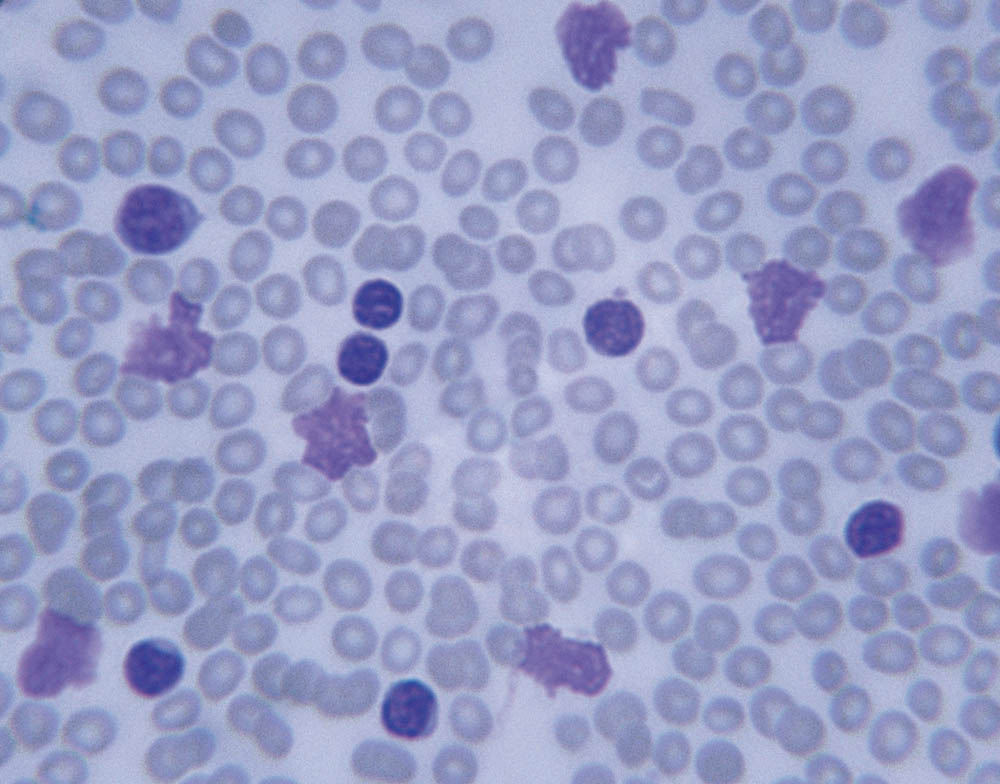- Better understanding of genomics has led to the identification of new subtypes and more focused treatments.
- Immunotherapy agents are also opening a new era in treatment of the disease.
Medically reviewed by Lewis Silverman, MD
A greater understanding of the genomics of pediatric leukemia — the genetic errors and irregularities that underlie the disease — has enabled researchers to divide the disease into additional subtypes. This has improved physicians’ ability to identify patients with an increased risk of relapse and to prescribe treatments to reduce that risk. It also has led to the development of new agents and targeted therapies that are particularly effective against certain subtypes.
In acute lymphoblastic leukemia (ALL), for example, a subtype known as Philadelphia chromosome-positive is marked by a fusion of two genes. Affecting 4-5% of all childhood ALL patients, it is treated with drugs that target the abnormal protein produced from that genetic mash-up.
Recently, scientists discovered that as many as 15% of children with ALL have a subtype with a similar genetic profile to Philadelphia chromosome-positive but which lacks the signature fusion gene. Such patients are at particularly high risk of relapse. Genomic studies revealed that this subtype, known as Philadelphia chromosome-like ALL, harbors other gene fusions, some of which are vulnerable to the same drugs used for Philadelphia chromosome-positive and some of which are targetable by other drugs.

“With next-generation genomic sequencing, we can often determine, within a week, which subtype of ALL a patient has and develop a treatment plan geared specifically to that subtype,” says Lewis Silverman, MD, director of Clinical Research and Clinical Care at Dana-Farber/Boston Children’s Cancer and Blood Disorders Center and director of the Dana-Farber ALL Consortium.
Immunotherapy approaches
Another critical advance in the treatment of childhood leukemia has been the development of new forms of immunotherapy. The drug blinatumomab, a “bispecific” antibody which essentially handcuffs B-ALL tumor cells directly to immune system T cells, has been approved by the FDA for children with ALL that has relapsed or become resistant to other therapies. The approval was recently extended to patients with B-cell precursor ALL who are in their first or second complete remission and have minimal residual disease above a certain level.
“Blinatumomab has changed our options for children with relapsed or refractory [hard to treat] disease,” Silverman remarks. “For many patients, it brings the disease under control to the point where they’re eligible for a stem cell transplant.”
Investigators are currently conducting clinical trials of a “conjugate” drug known as inotuzumab, which consists of an antibody linked to a cell toxin. The drug works by using the antibody as a homing device to bring the toxin directly to cancer cells. It has been approved for adults with B-cell ALL and seems to be equally active in pediatric patients, Silverman notes.
A potentially transformative treatment for pediatric leukemia is CAR T-cell therapy, which uses genetically engineered T cells as a weapon against tumor cells. In clinical trials, CAR T cells have been shown to be active in patients with relapsed or refractory disease. Like blinatumomab and inotuzumab, CAR T cells may initially be a “bridge” treatment, reducing patients’ disease to a level where they can receive a stem cell transplant, Silverman says. Research is under way to determine whether CAR T cells may be able to replace stem cell transplantation for some relapsed patients.
